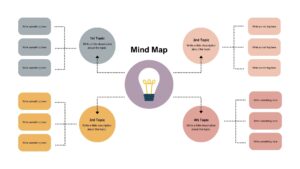So, what are the top visual trends reshaping education marketing in 2025—and how can you stay ahead?

In today’s hyper-digital learning landscape, visuals are no longer decorative—they’re decisive. Students, parents, and decision-makers alike crave clarity, speed, and emotional connection.
Yet many education brands still rely on outdated visuals and miss the mark on engagement.
Whether you’re a higher education marketing agency, an EdTech firm, or a university’s digital team, visual content can make or break your marketing funnel.
The pain?
Dwindling attention spans, skyrocketing ad fatigue, and a market flooded with sameness.
So, what are the top visual trends reshaping education marketing in 2025—and how can you stay ahead?
1. Short-form Educational Reels
Micro-videos are dominating higher education digital marketing. Platforms like TikTok, Instagram Reels, and YouTube Shorts are driving 2x higher engagement than static posts. Universities and EdTech brands are using snackable video to demystify courses, showcase alumni success, and promote campus life.
- Benefit: Builds fast trust with Gen Z and millennials in under 30 seconds.
- Stat: Short-form videos have a 95% video completion rate on TikTok (HubSpot, 2024).
2. Data Visualisation as Storytelling

Forget dense reports—visualized data wins attention. Infographics, animated graphs, and interactive dashboards are being embedded in education marketing strategies to communicate impact, rankings, or student outcomes.
- Benefit: Converts complex results into digestible, shareable content that drives SEO and authority.
- Trend: Tools like Canva, Flourish, and Tableau are being adopted across education marketing companies for brand storytelling.
3. Cinematic Student Testimonial Videos
The age of the shaky Zoom interview is over. Professionally shot, story-driven student testimonials with cinematic quality are converting like never before. Think drone campus shots, emotional B-roll, and narrative hooks.
- Benefit: Humanizes your brand and boosts conversion rates by up to 80% (Wistia).
- Application: A must for any university marketing strategy targeting international or postgraduate markets.
4. Personalized Visual Content Using AI
Visual personalization is exploding. AI tools like Adobe Firefly, Canva Magic Studio, and Midjourney are helping education marketing agencies create visuals tailored to specific personas—first-gen students, STEM aspirants, or adult learners.
- Benefit: Increases email CTR by 29% and landing page conversion by 34% (Campaign Monitor).
- SEO Edge: Custom imagery reduces bounce rate—a key SEO for higher education metric.
5. Interactive Campus Maps and Virtual Tours
Forget flat photos. Interactive campus experiences are the gold standard now—especially for overseas students. Virtual tours embedded on websites improve time-on-page (a Google ranking signal).
- Benefit: Offers immersive pre-enrollment engagement and differentiates your brand.
- Tool: Matterport and YouVisit are becoming staples for higher education inbound marketing.
6. Explainer Animations for B2B EdTech Sales

In the B2B world of EdTech and education SaaS, whitepapers are being replaced by 60-second explainer videos and motion graphics. Think product walkthroughs with animated UIs and onboarding previews.
- Benefit: Cuts through jargon and boosts demo bookings by up to 40%.
- Relevance: A key trend for education sector marketing aimed at institutional buyers.
7. Vertical Video in Email Campaigns
Email isn’t dead—it just needs to be visual-first. Embedding vertical videos in email nurtures, especially in marketing for education, drives up open rates and CTRs. Use it for acceptance messages, course updates, or product onboarding.
- Benefit: Improves mobile UX and increases engagement by 300% (Litmus).
- SEO Tie-in: Higher engagement = stronger domain authority = better SEO for universities.
8. Meme Marketing with Educational Insight
Yes, even education marketing can benefit from smart memes. Meme-based visual content with subtle academic humor or admissions commentary sees massive traction on student forums and LinkedIn alike.
- Benefit: Makes your brand relatable without losing authority.
- Pro Tip: Use trending formats + course/industry relevance = perfect for inbound marketing for higher education.
9. Micro-Carousels for Course Highlights

On platforms like LinkedIn and Instagram, multi-frame carousels (designed like mini-slide decks) showcasing course USPs, outcomes, and FAQs are thriving. Designed for swipe, not scroll.
- Benefit: Carousel posts increase reach by 200% (LinkedIn Internal Data, 2024).
- Best Fit: Great for education marketing strategy across both B2B and B2C segments.
10. User-Generated Visuals and Peer Reviews
Students trust students. Visual content created by real learners—campus photos, testimonial snippets, even course notes—is the new credibility badge. Smart institutions embed UGC galleries into admissions pages and email funnels.
- Benefit: UGC increases conversions by 5x compared to branded visuals (Nosto, 2024).
- SEO Angle: Fresh, user-uploaded content signals relevance—a plus for higher education SEO.
Conclusion: Visual-First = Future-Ready
In a world of AI-driven content and hyper-short attention spans, visual storytelling is the secret weapon of every winning education marketing plan.
From cinematic testimonials to TikTok tutorials and immersive virtual tours, the right visual trends can drastically boost both awareness and conversion.
Remember, it’s not just about what you say—it’s how you show it.
Which visual trend will you adopt first to future-proof your education marketing strategy?



Pingback: Top 10 Marketing for Education Case Studies That Inspire